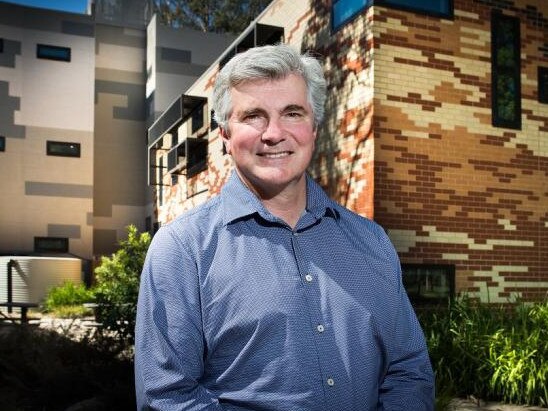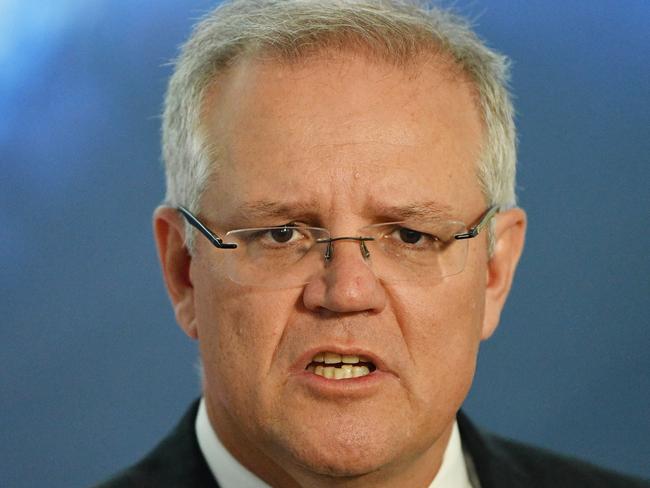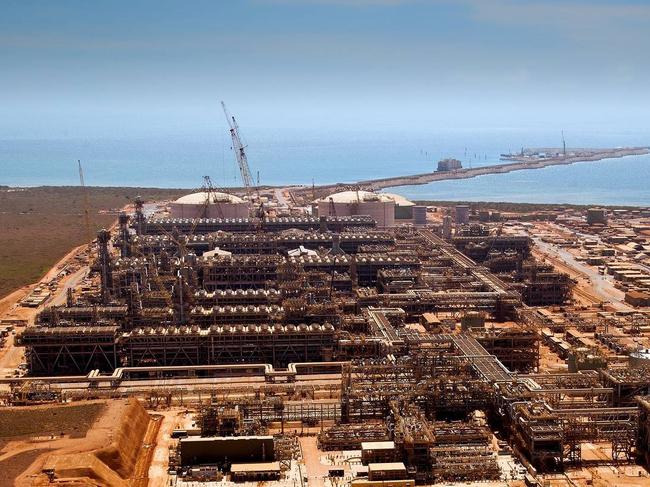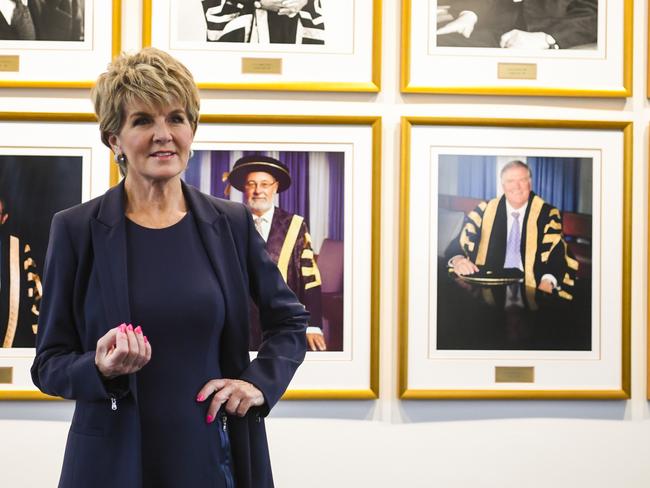Zero emissions by 2050: what you should know
Anthony Albanese is set to commit Labor to a goal of net zero greenhouse gas emissions by 2050 – a policy which critics say will wreck the economy. Here’s what you should know.
Critics say it will wreck the economy. Proponents say it will save the planet. The idea of moving to zero greenhouse gas emissions by 2050 is already the big debate of 2020 – and it will be given fresh impetus today when Anthony Albanese commits Labor to the goal.
The Labor leader will use a speech in Melbourne today to announce the policy.
It’s a difficult issue for the party given its previous emissions platform was seen as part of the reason why it failed to win government at the May 2019 election.
Mr Albanese says a 2050 net zero target should be as non-controversial in Australia as it is in most nations.
“The climate wars have seen a decade wasted when it should have been a decade won,” he will say in today’s speech.
But Cabinet minister Peter Dutton said the plan would mean higher electricity prices and risk jobs going offshore.
“Anthony Albanese today needs to detail not some airy, fairy aspiration. He needs to tell Australians what it is going to mean, how many jobs will be lost,” Mr Dutton told the Nine Network.
Here’s what you should know about ‘net zero’.
SO DOES ZERO EMISSIONS MEAN TURNING OFF ALL THE LIGHTS?
No. What is being proposed is net zero emissions, rather than absolute zero. That means greenhouse gas emissions from activities and industries such as energy, agriculture, mining, transport and waste management are balanced out by initiatives such as planting more trees, and carbon capture technologies. More on that later.

WHERE DID THE IDEA FOR NET ZERO EMISSIONS COME FROM?
“The idea of net zero by 2050 started to develop with the Paris Agreement, and it’s been a process of evolution since there,” said emissions expert Honorary Professor Peter Cook from the University of Melbourne.
The UK became the first major economy to pledge to reach the goal in June last year, with an interesting admission about their contribution to global emissions.
Energy and Clean Growth Minister Chris Skidmore said at the time that the UK “kickstarted the industrial revolution, which was responsible for economic growth across the globe but also for increasing emissions”.
The idea has quickly gathered favour as a way to prevent global temperatures rising more than two degrees. Some 80 countries around the world have pledged to reach “net zero” by 2050.
WILL AUSTRALIA COMMIT TO NET ZERO EMISSIONS BY 2050?

Many nations are expected to announce their zero emissions goal for 2050 at the UN Climate Summit in Glasgow this November, but the Australian government may pursue a technology investment target to reduce emissions instead.
Zali Steggall, the independent Member for Warringah, plans to introduce a Climate Change Bill to parliament in March, which would mandate a zero net emissions target by 2050 and create a Climate Change Commission to advise the government on interim targets to achieve the goal.
BUT WILL THE GOVERNMENT DEBATE THE STEGALL BILL?
As the government controls what bills are brought on for debate in parliament, it is under no obligation to bring on the Climate Change Bill – although a number of moderate Liberals such as Trent Zimmerman are in favour of the net zero goal. But Ms Steggall has created a website, climateactnow.com.au, calling for Australians to petition the government to debate the bill. As of Friday February 21, 41,000 people had signed it.
“Yes it’s up to the government to decide to debate it, they have the numbers, but it’s people who will put their pressure on their MPs to get that to happen,” Ms Steggall said.
WHO SUPPORTS THE IDEA?
All states and mainland territories have already set a goal of net zero emissions – although New South Wales and Western Australia refer to it as an “aspirational” target. Tasmania has already reached net zero emissions.
Australia’s business community has been vocal in its support of Ms Steggall’s bill, a fact she said had taken the major parties by surprise.
“I think both sides of politics have struggled to get that support from the business community in terms of what’s needed and that certainly was something that they have stopped and taken notice of,” she said. “The business sector … is really over the party politics of it, the divisive politics of it, and actually just want a sensible plan put forward.”
Research from the left-leaning Australia Institute late last year claimed that 62 per cent of Australians support a national target of net-zero carbon emissions by 2050.
WHO OPPOSES THE IDEA?

Prime Minister Scott Morrison is reportedly lukewarm on the idea of a national target of net zero emissions, while Deputy Prime Minister Michael McCormack said he was opposed, declaring it would “send factories and industries offshore”. Other Nationals have made even stronger statements. Former Federal Reources Minister Matt Canavan described the goal as “fantastical” and said he would cross the floor if it came to a vote in parliament, while NSW Deputy Premier John Barilaro said it would “mean the end of agriculture” and mining.
The head of the so-called “Otis Group” of Labor MPs concerned about coal industry jobs, Joel Fitzgibbon, has previously called for Labor to moderate its emissions reduction target, but he was quickly slapped down by the party’s climate change spokesman, Mark Butler.
SO WHERE ARE AUSTRALIA’S EMISSIONS AT NOW?

Rising or falling? According to the federal government’s National Greenhouse Gas Inventory, for the year ending June 30, 2019, Australia’s total greenhouse gas emissions declined just 0.1 per cent on the year to June 30, 2018 – from 532.4 million tons to 532.0 million tons.
Professor Mark Howden, Director of the Climate Change Institute at the Australian National University, said the various claims made about Australia’s emissions brought to mind the old adage about “lies, damned lies and statistics”.
But the calculations used for the NGGI could be trusted because they were “developed by the IPCC [International Panel on Climate Change] and OECD [Organisation for Economic Coordiantion and Development] and are standard across countries with various checks and balances in them,” he said.
Discussion about Australia’s “emissions per capita” or “emissions per dollar of GDP” were “irrelevant” and “distractions” that were “used to play a political game,” Prof Howden said.
Ms Steggall said there was a lack of clarity around emissions data, particularly in regard to carbon capture operations.
“The Government has its line, the Opposition has its line, the Greens have another line … (and) there is no clear cut reporting mechanism, in terms of what they’re doing in terms of carbon sinks and sequestration projects, compared to our emissions,” she told News Corp.
“There is just no clarity … and I think that’s why this debate has been so stuck in the mud.
“In terms of my briefings with scientists, my indications are we’re not reducing at a sufficient rate. But it’s been incredibly hard to get a straight answer.”
SO WILL AUSTRALIA MEET ITS EMISSIONS REDUCTIONS TARGETS?

Australia agreed to reduce emissions by five per cent below 2000 levels by this year under the Kyoto Protocol, and by 26-28 per cent of 2005 levels by the year 2030 under the Paris Agreement.
In 2018, Prime Minister Morrison famously boasted that Australia would meet its Paris Agreement commitments “in a canter” – but others dispute the prediction.
“When we look at what’s going on, we will achieve (Kyoto) – but at the moment we’re grossly missing our Paris Agreement target for 2030,” Prof Howden said.
WHAT ABOUT OFFSETS? CAN’T WE JUST PLANT MORE TREES?

Related news:
Terms set for bushfire Royal Commission
Qantas flights slashed as it takes $150m hit
How 15 seconds sealed MH370 passengers’ fate
Australia rates poorly in WHO/UNICEF child report
Yes, and we do. Trees capture carbon effectively, but they also have lifespans, so sooner or later, they will reduce carbon dioxide back into the atmosphere. Thus the need to look at other carbon capture solutions.
Hon Prof Peter Cook from the University of Melbourne said there are currently some 50 carbon storage operations around the world, including the world’s largest, in which carbon dioxide is being sequestered two kilometres underground as part of the Gorgon Gas Project off Western Australia.
Other pioneers in Canada and Switzerland are looking at extracting carbon dioxide directly from the atmosphere, although thus far these technologies were proving expensive and difficult to realise at scale, Hon Prof Cook said.
HOW MUCH WILL IT COST?
This week, Prime Minister Scott Morrison said he wouldn’t sign the country up to any emissions reduction target without being able to tell Australians the cost.
Former Labor leader and now NSW One Nation MP Mark Latham claimed the Australian economy would take a hit of 25 per cent on GDP growth if “net zero by 2050” was adopted.
“What’s the cost? We don’t know. What’s the road map? We don’t know. But these are good reasons why we need to start looking at this now,” said Hon Prof Cook.
Not signing up to a net zero emissions pledge could also be costly to Australia, he said, pointing out that it was “a lot easier” for the US or China to go their own way than it was for a nation of Australia’s size.
Prof Howden said achieving net zero would be easier for some sectors of our economy than others – particularly agriculture.
“The focus on electricity – which is about 30 per cent of emissions – takes people’s attention away from other sectors,” he said.
Levels of research and development that could help Australia’s industries bring their emissions down were currently “very low,” Prof Howden said.
SO IS IT ALL JUST ABOUT CARBON DIOXIDE?
Carbon dioxide is the largest greenhouse gas, but methane is the second biggest contributor. Scientists say methane levels in the atmosphere have increased 150 per cent over the past 300 years – and according to new research from the University of Rochester in the US, the amount that can be attributed to anthropogenic fossil sources is 25-40 per cent higher than previously estimated. But while carbon dioxide persists in the atmosphere for a century, methane has a lifespan of just nine years – which means changes to methane emissions would take effect more quickly.
IS IT POSSIBLE TO GO BEYOND ZERO EMISSIONS?

Interestingly, some organisations are starting to look at going “beyond zero” – including the Australian National University.
ANU’s recently appointed Chancellor, former Foreign Minister Julie Bishop, revealed on Wednesday that the ANU would go “carbon negative” as soon as possible.
Australia was increasingly perceived by the rest of the world as being “on the front line of climate change,” and the university had a role to play in mitigating its impact, she said.
In January, Microsoft announced an ambitious plan to go carbon negative by 2030, and an even bolder goal of completely erasing its carbon footprint by 2050.
“(By) 2050 Microsoft will remove from the environment all the carbon the company has emitted either directly or by electrical consumption since it was founded in 1975,” company president Brad Smith said.
– With AAP
